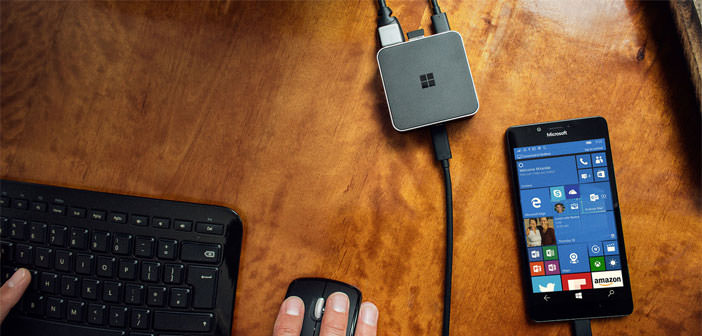Continuum transforms your smartphone into a PC: the advantages and limitations of Windows 10 and Lumia 950.
We explain in detail how this Continuum on Windows 10 and enabled on the new Lumia 950 and 950XL. Continuum transforms your smartphone into a PC, but as in any first version is no shortage limits.
Microsoft announced Lumia 950 and 950XL within an event in which he was shown the first proprietary hardware with Windows 10. Among the many new features, the new smartphones integrate support for Continuum, how it takes to turn smartphone into a real PC. All this is made possible by hardware integrated: Continuum need for it at least a Qualcomm Snapdragon processor 808 or higher.
What is Continuum?
Continuum is a new feature introduced with Windows 10 for the desktop version and that for the first time on smartphones is integrated within Windows 10 Mobile. With the powerful, you can revolutionize the user experience of smartphones, allowing for example the use of display systems and external inputs. The most obvious case is that of mouse, keyboard and display: matching accessories for a smartphone enabled the use of Continuum, not only will we use mouse and keyboard with a smartphone, but all elements of the interface will adapt to the size and resolution of the display to a user experience that is very close to that of a personal computer itself.
How does Continuum?
To operate Continuum requires a dedicated accessory, called Microsoft Display Dock. The dock integrates several ports that will be connected to permanently display, mouse and keyboard. The accessory in its first version that Microsoft will release will cost $99 and will integrate an HDMI port and DisplayPort, three USB 2.0 ports and a USB Type-C. At the dock you can connect external monitors, peripherals such as mouse and keyboard, but also USB stick for use also external files with their smartphones.
Access this feature is very simple: after connecting external devices to the dock, just connect your smartphone using the only USB Type-C present. This way it will automatically Continuum, presenting two different graphical interfaces, a display and the other on the smartphone. Both modes will be usable at all times and also at the same time, so while you will change an Office document on the external monitor will be able to answer a phone call on your smartphone, and vice versa.

The interface of the applications on the monitor is identical to that of the same applications on PC, which is obvious if we consider that the applications are the same ” universal ” on both platforms. Continuum also work on the keyboard shortcut’s typical Windows desktop, such as Ctrl+Tab (to switch to another app) or Ctrl+C, Ctrl+X and Ctrl+V to copy, cut and paste content. However, not all features of Windows 10 desktops are available through Continuum: striking example of this is the lack of Snap mode.
In other words, Continuum will not allow to launch two applications simultaneously on the external monitor and assisting them in the interface. You can run two applications, a display and a smartphone. But the real multi-window on display is currently absent. It is in our view a serious lack that Microsoft still can fill later with a software update, or a new version of the dock or smartphone.
Continuum can also be used by connecting your smartphone to an external display via Miracast, but the user experience is the one with the better Display Dock according to Microsoft. The fact dock recharges the device during use, and images reproduced on the display will be free of lag and graphical artifacts due to compression of the standard of wireless sharing.


